I tried AeroPress' biggest rival – is the Wacaco Picopresso any good?
Tiny but brilliant, the portable Wacaco Picopresso makes exceptional espressos on the go

If you’re on the go and still want quality coffee, look no further. This premium, durable espresso maker is perfect for coffee lovers. You’ll want to own a grinder and some coffee scales though.
-
+
Small footprint
-
+
Really premium packaging and feel
-
+
Easy to use
-
+
Makes great espresso
-
-
No milk frothing
-
-
Need to clean between espressos
-
-
Requires a grinder and scales
You can trust Homes & Gardens.

Aeropress has historically dominated the portable coffee makers market, but with the launch of the Wacaco Picopresso, it looks like they've got some competition. This soda-sized espresso maker looks luxurious, but is it any good?
I started testing the Wacaco Picopresso a year ago and it was love at first shot. This is an incredibly premium product. The simple functions, a satin sheen exterior, neat interior design, and an impressive capacity to brew incredible coffee means that this is easily one of the best espresso machines on the market, even against models that are ten or twenty times the price.
As a portable espresso maker, this is right up there. If you want to know more about how it works and whether it's better than the AeroPress, here's everything you need to know.
Specifications

| Dimensions | 4.17 x 3.07 x 2.8 inches |
| Weight | 0.77 lb |
| Portafilter capacity | 18 g |
| Tank capacity | 80 ml |
| Materials | Aluminium and plastic |
| Pressure | 18 bars |
| Type | Hand pump |
Unboxing

It’s rare that an unboxing experience is truly pleasurable. This was like unboxing an Apple iPhone, but better. The thick, satin box feels ultra-premium. Inside, the Picopresso and its case look really smart. The box has a sponge inside to secure and protect it. This would be a bit tricky to recycle if I didn’t want to keep the box. At first sight, however, it’s the perfect present for a coffee fanatic.
It comes with a travel pouch, an aluminum funnel, and an aluminum palm tamper. This is the best tamper that I’ve received with a machine. All of the useful accessories fit into the box and can sit inside the piston so that you won’t lose them. It felt ultra-durable in my hand, too.
Who would it suit?
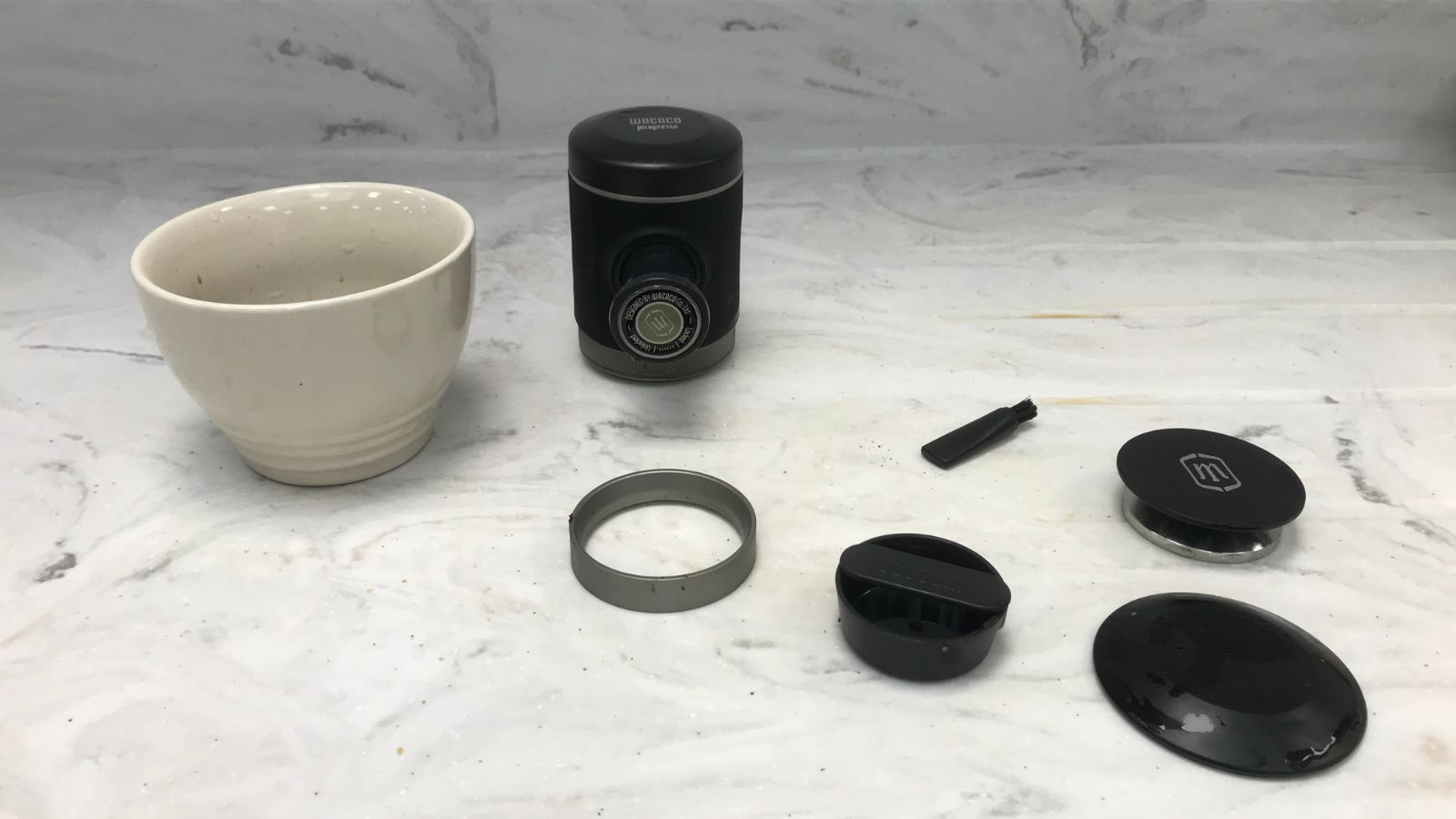
The Wacaco Picopresso is perfect if you’re often traveling for work or away at the weekends. It can deliver café quality coffee on the go. You’ll need a kettle or hot water tap nearby, but this means it will work in hotels and holiday homes. You’ll want to have a home grinder and scales to make perfect, consistent coffee.
If this is your first espresso machine, or you have small countertops, this compact, relatively inexpensive espresso maker is the perfect place to start. However, if you want all the bells and whistles of a full-sized machine, such as an integrated grinder, steam wand, and hot water boiler, this might not be the one for you. Powerful machines are always going to offer more variety, but the Picopresso might make you reconsider whether you need a big espresso machine.
Design expertise in your inbox – from inspiring decorating ideas and beautiful celebrity homes to practical gardening advice and shopping round-ups.
What is it like to use?
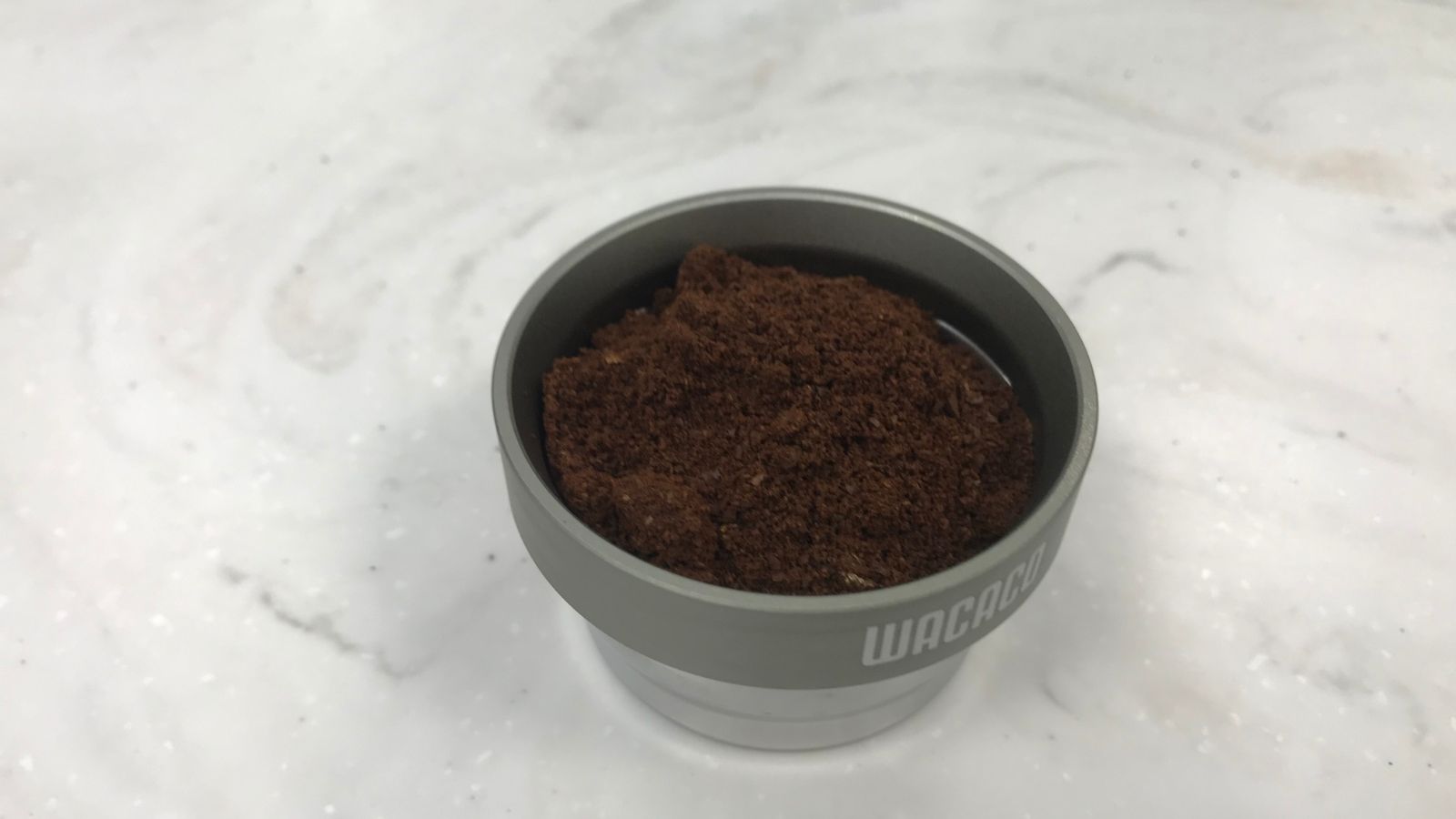
Easy is an understatement. I like to watch videos to work out how to use small appliances, but the instructions were so clear for this, I didn’t need to. To start, I unscrewed the bottom. I then placed the funnel on top as I scooped 18g of coffee into the double walled basket. I used the Wacaco manual grinder, available on Amazon and coffee scales, also available on Amazon to make sure that I got my measurements perfect. I think 18g was the limit for what the portafilter can hold, which is perfect for a double shot.
Before screwing the portafilter basket in, Wacaco recommends that you pump boiling water through the espresso maker to warm it. This doesn’t take long and gives you good practice for when you make coffee. To get started on your espresso add 50ml of hot water into the barrel and screw the portafilter into place. I twisted the front button to free the pump and, after pumping over a coffee cup for a few seconds, I saw smooth espresso pouring out of my Picopresso. You need to have steady hands for this because it’s entirely held, pumped, and controlled by you.
Testing espresso
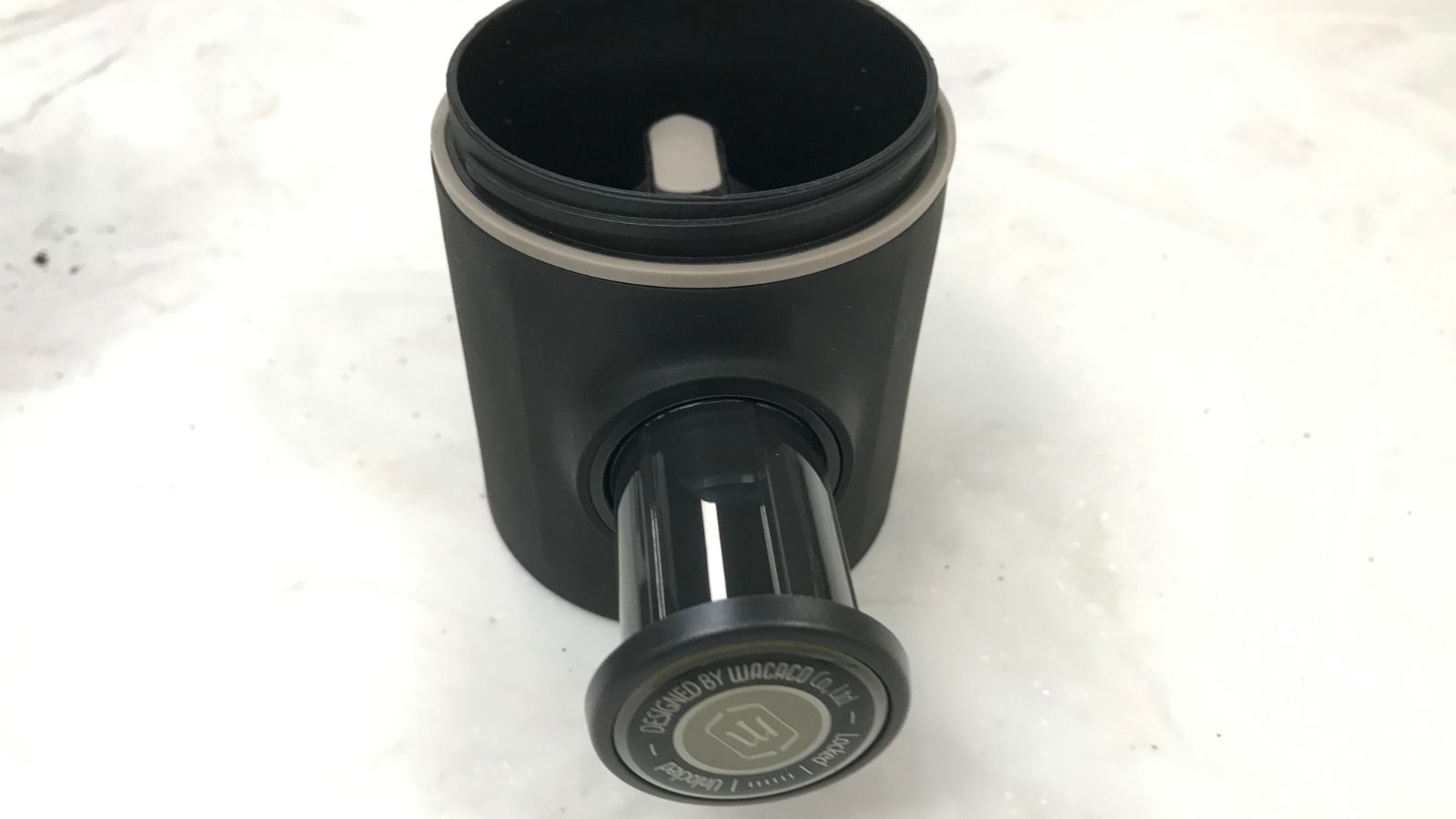
Rather than use electricity to attain the pressure of an espresso machine, the piston uses a hand pump to create 18 bars of pressure, which then forces the hot water through the basket. This whole process took about a minute in total. That’s a little longer than an espresso machine, but there was no warm-up or set-up required. There’s no way of measuring how much water you’re adding in, because there’s no watermark. If you want to be totally precise you’ll need to measure out 50ml of boiling water beforehand.
However, for such a tiny, rough-and-ready machine, it produces unbelievable espresso. My espresso had a lovely crema on top. I was really impressed at how intense and smooth my shot was given how quickly I extracted it and how quiet this little espresso machine was.
However, here we reach the obvious drawback with this machine. In all our other espresso machine reviews I also test americanos and cappuccinos. Here, however, there's only one test. There’s nothing else to make with this: it doesn’t have a steam wand, so it’s pure espressos or nothing. It’s an expert in espressos though.
Cleaning, Storage, and Maintenance
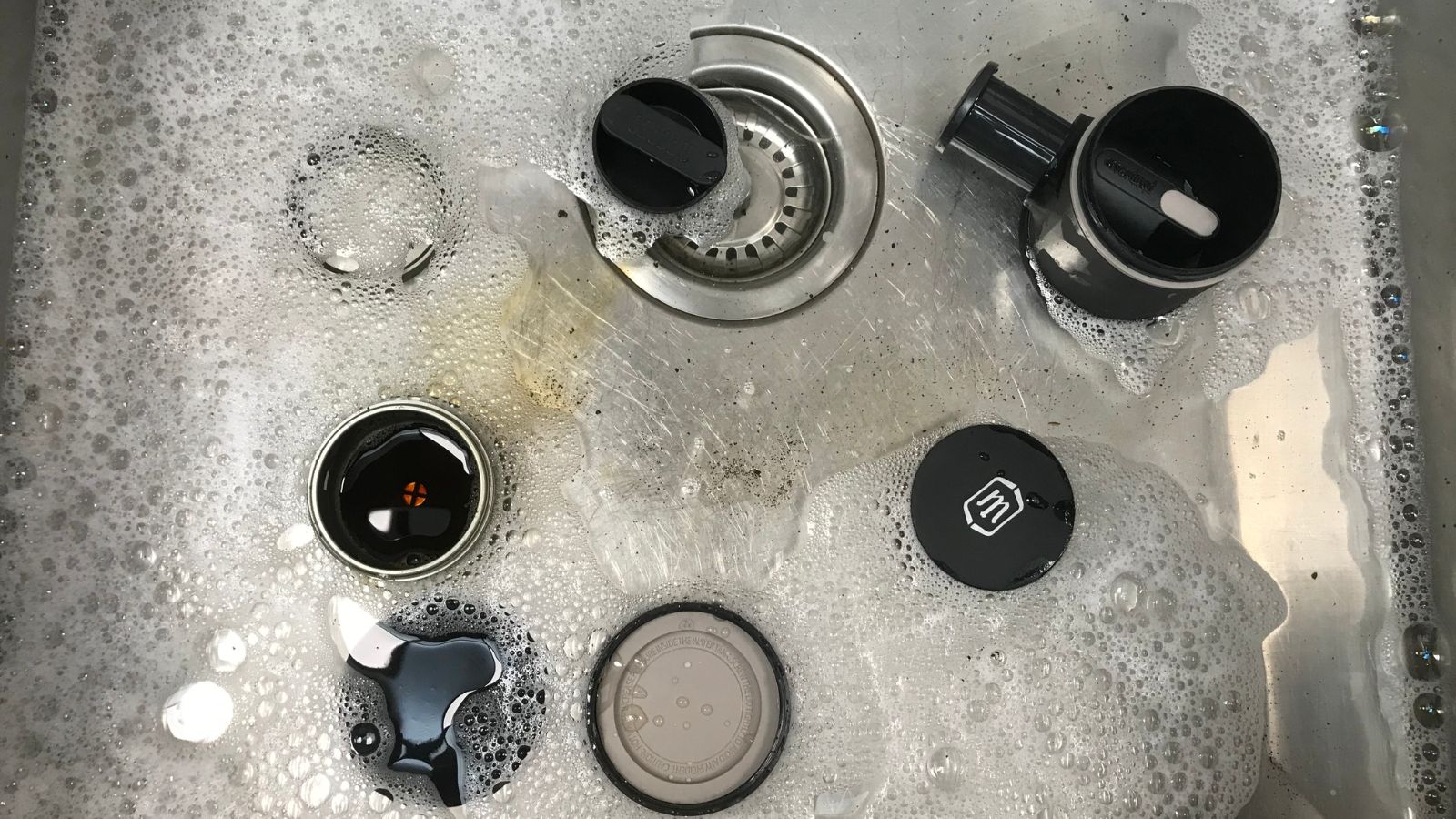
This is just as easy to take apart as it is to put together. It's not dishwasher safe, but it's simple fill a sink with warm, soapy water and clean each part individually. Make sure you give the piston a thorough dry, otherwise it’ll leak water if you put it into your bag when left damp and unscrewed. As small appliances go, it’s really easy to clean.
As a portable espresso maker, this is designed to be easy to store. It packs back into itself and zips up in a neat case. It couldn’t be more compact. It’s the size of a can of cola in total, so you should have room for it almost anywhere. The only maintenance that this will need is thorough cleaning. I’d soak the basket in a dilution of water and vinegar or cleaning liquid every week for a deep clean.
How does it rate online?

Users love the Picopresso. I found that most user reviews were from people who want coffee whilst they travel and those who are tight on space. Almost everyone commented on how premium it felt; it’s a really impressive espresso maker.
Some reviewers found hand washing a little cumbersome, so wouldn’t recommend it for those in a rush. It’s true. You’ll need to wash, dry and reassemble the components carefully, but to be fair, every machine requires proper cleaning and maintenance. Unlike the Nanopresso, available on Amazon, which has an add-on feature for single-serve coffee, the Picopresso can only handle ground coffee. A number of users said that they would like to have a feature for coffee pods in the future, especially for those who don’t own grinders.
How does it compare?
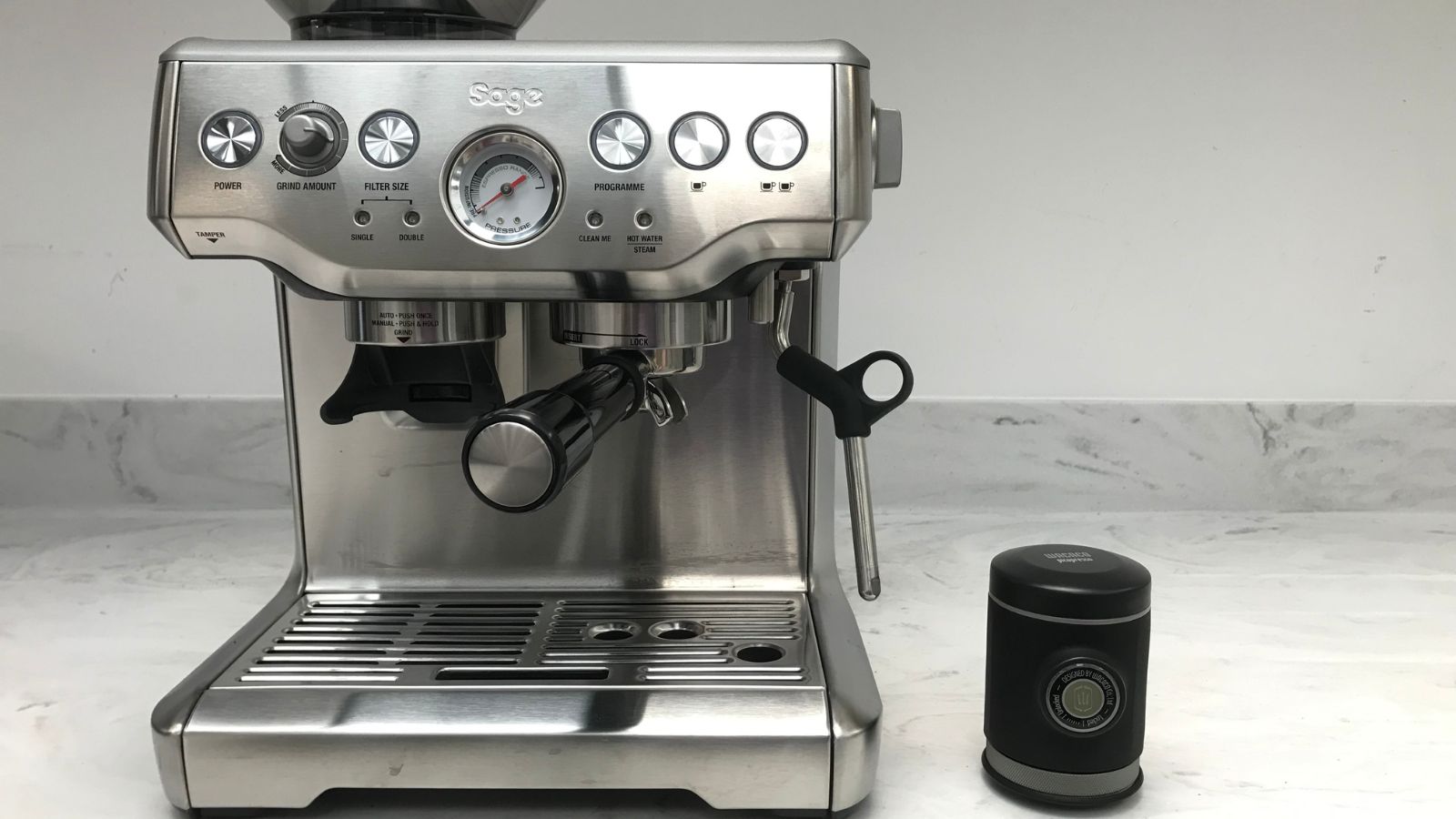
If you’re looking at the Picopresso, you’ll be looking for less expensive, smaller espresso machines. The section after this one is dedicated to comparing the Wacaco Picopresso and the AeroPress, since that's the question on everyone's lips. However, they're not the only two models on the market. If you want a compact espresso machine, you'll have also come across the Breville Bambino Plus. You can see in the image above that they look almost ridiculous next to each other on a countertop. The Bambino Plus is compact, but it looks mammoth next to the Picopresso. For taste, there’s nothing between the two in terms of espressos. They both made a really good shot. Both require you to own either a coffee grinder or pre-ground coffee too.
If you only wanted to make espressos, I would choose the Picopresso. It’s small, portable, and less of an investment. It’s also great in the mornings, because it’s close to silent. However, if you don’t need your espresso maker to be portable, the Bambino Plus can froth milk and boil water itself. It doesn’t need you to power it, nor does it require as much cleaning between coffees. Both are brilliant espresso makers, but they serve different people.
Wacaco Picopresso vs AeroPress
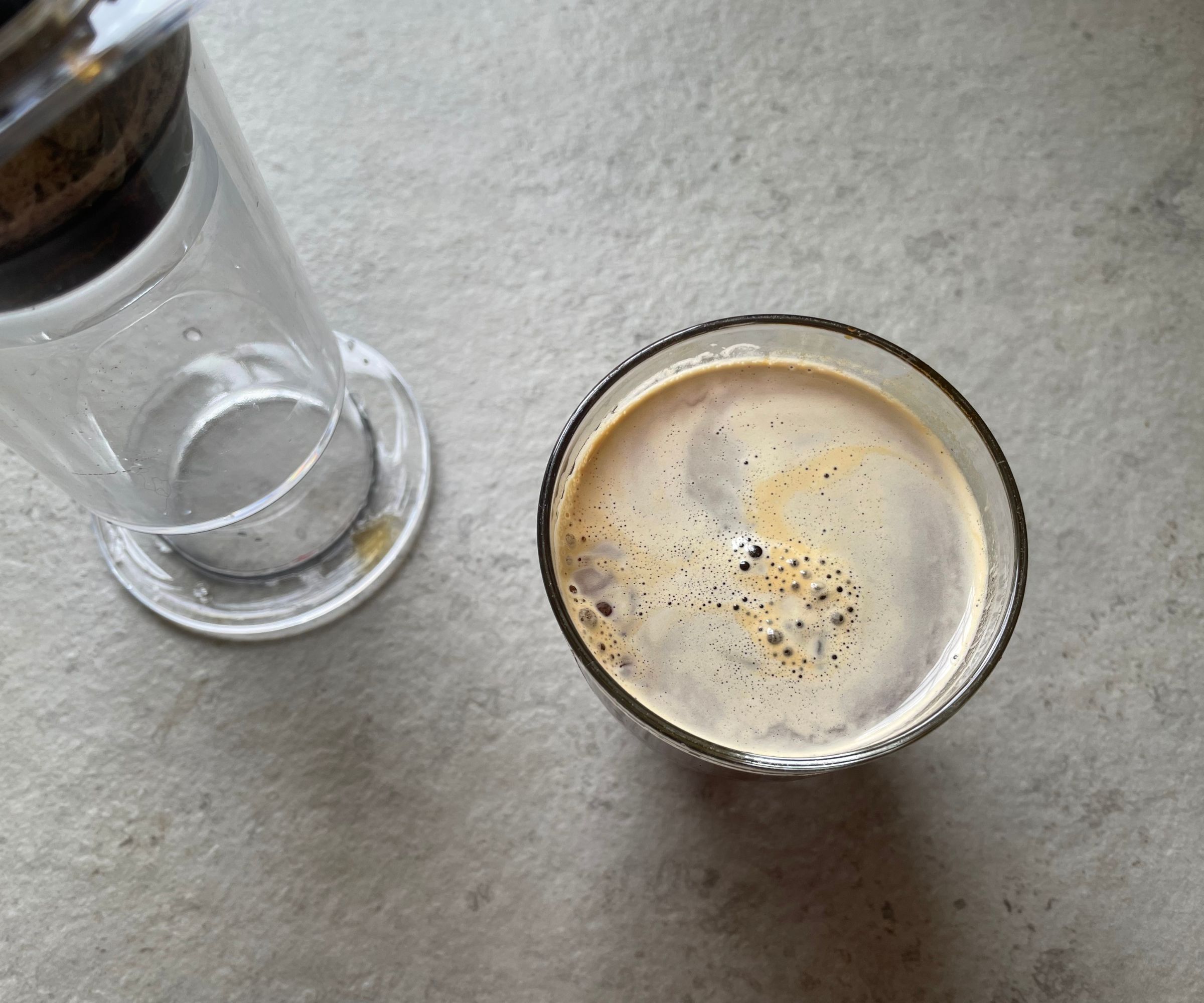
I would be surprised if you've never heard of the AeroPress before. It's a Californian start-up that took the coffee world by a storm. The AeroPress is a slightly different shape to the Picopresso – it's taller and slimmer – but it's still easily portable. The clear BPA-free plastic doesn't have the same sleek design that the Picopresso does, but it has quite a fun, scientific-like aesthetic, that lots of people love.
The clear AeroPress is also really useful for watching your coffee brew. There are fewer steps to make coffee in the AeroPress and I would say that the overall process is less fiddly than the Wacaco Picopresso, but neither is particularly difficult.
However, it is worth noting that, technically, the AeroPress can only make espresso-like shots. It can make Americanos too, but you can't get the same pressure and extraction in the AeroPress' syringe-like tube to make a proper espresso. I don't think there's much of a flavor difference, but if you know you're a coffee snob and you want a technically perfect espresso, the Wacaco Picopresso is better for you.
So, if you want the luxury, specialty experience, the Wacaco Picopresso is a better investment. It makes for a good gift and the design is ultra-stylish. However, if you want to save some money and hassle, the AeroPress is a better bet.
Should you buy it?
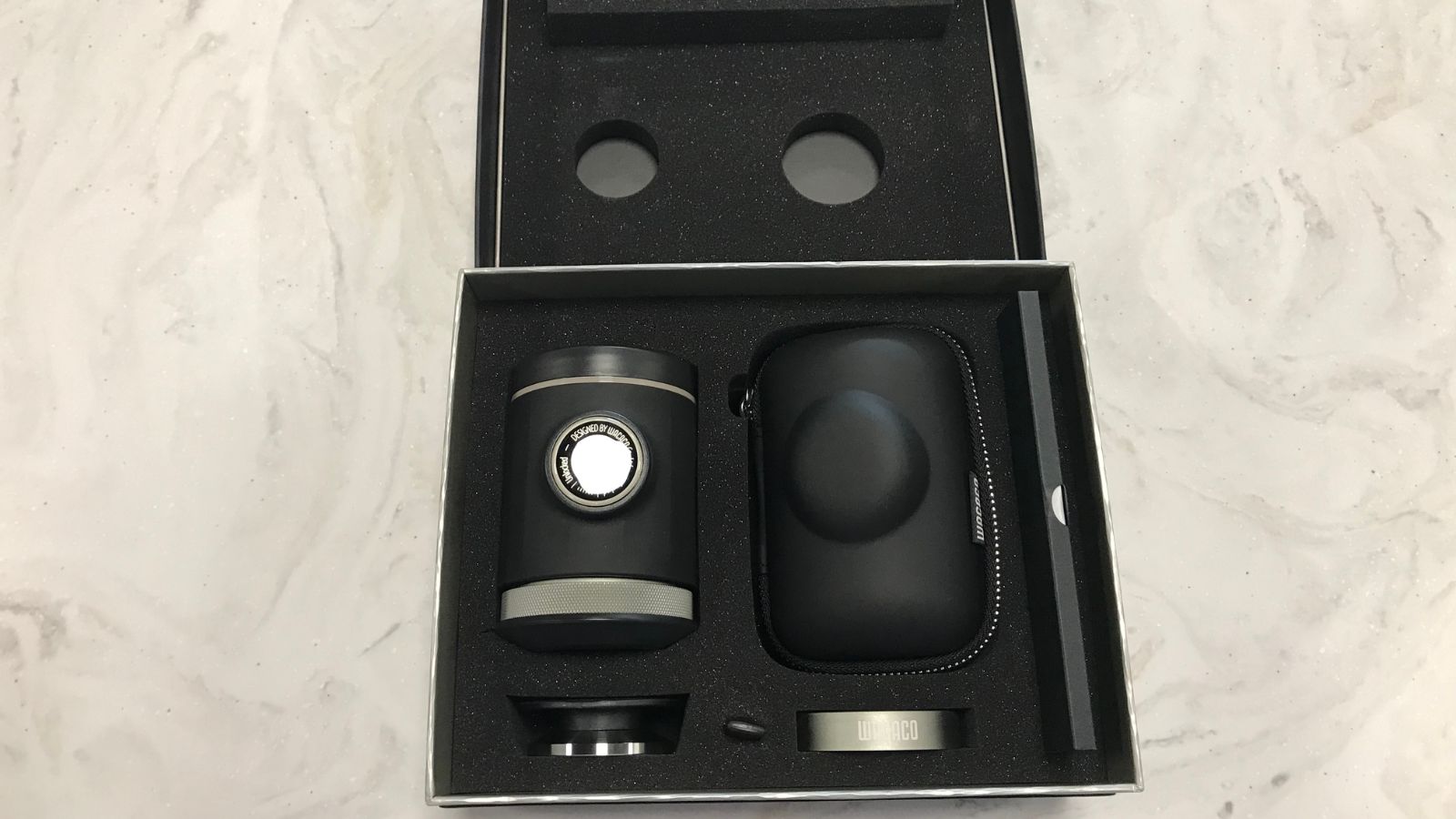
A pocketful of Picopresso is every coffee connoisseur's dream. It’s the most compact espresso machine on the market, but it doesn’t feel inferior to Picopresso’s countertop competitors.
As a barista, I have high standards when it comes to espresso makers and I wasn't going to give this an easy ride just because it's portable. After using it to brew consistently smooth, well-extracted coffee, I can vouch for the Wacaco Picopresso. It's an impressive coffee maker. If you’re on the go, off on holiday, or know you only want espresso rather than any other style, this is a perfect little machine.
How We Test
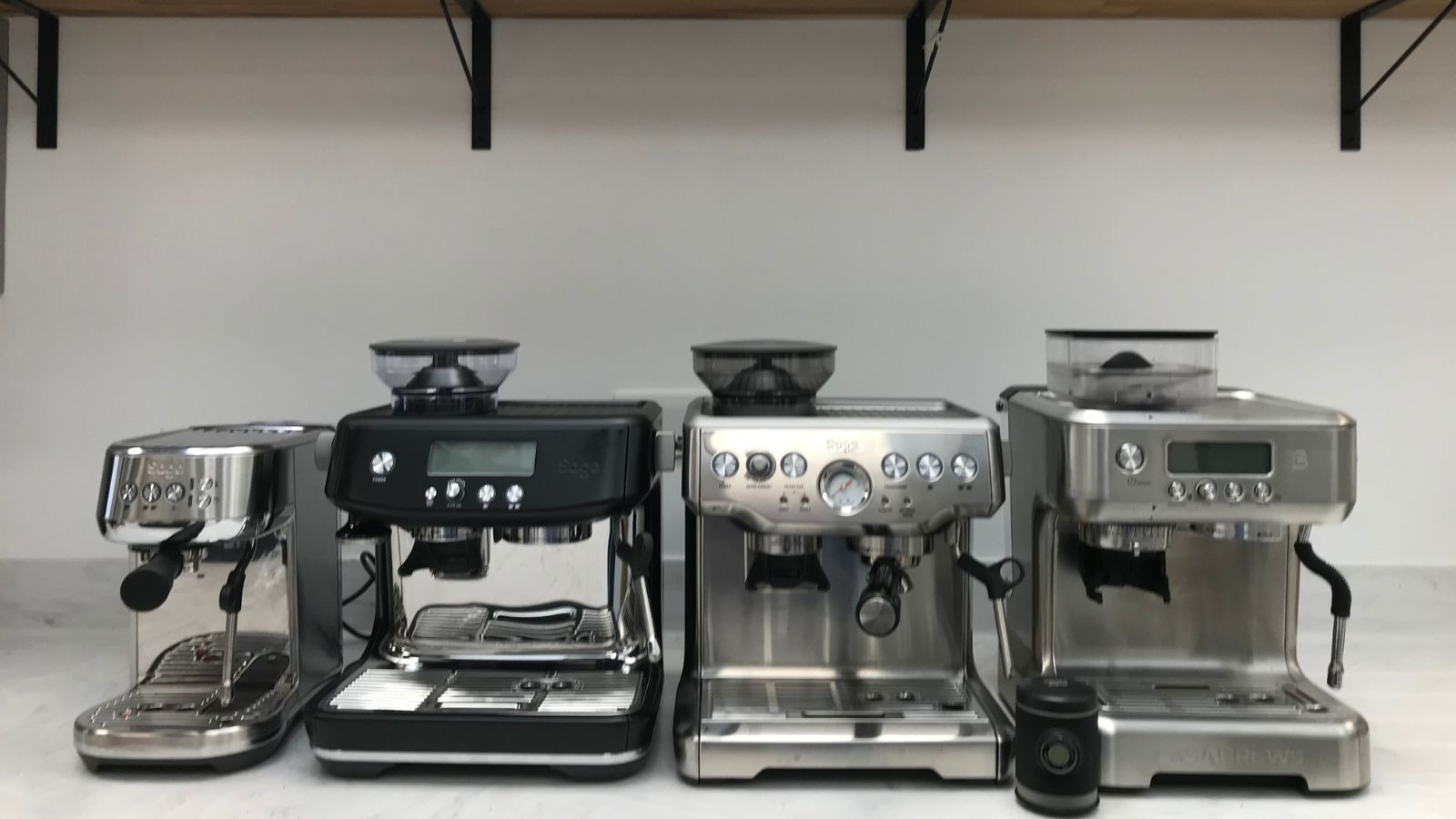
Every espresso machine that we recommend has been put through its paces by our team of experts. Laura, a trained barista, used this espresso machine in our test kitchen.
We have a series of standard tests which we put every espresso machine through. These include espresso, Americano, and cappuccino. We make sure that we taste the coffee, so that we can judge the flavour, as well as evaluate the process. We look at everything from unboxing to cleaning, so you know what to expect from your espresso machine. For more detail about how we test you can visit our dedicated page.

Laura is our eCommerce editor. As a fully qualified barista, she's our expert in all things coffee and has tested over thirty of the best coffee makers on the market. She has also interviewed Q-Graders and world-leading experts in the coffee industry, so has an intimate knowledge of all things coffee. Before joining Homes & Gardens, she studied English at Oxford University. Whilst studying, she trained as a master perfumer and worked in the luxury fragrance industry for five years. Her collection of home fragrance is extensive and she's met and interviewed five of the world's finest perfumers (also known as 'noses'). As a result of this expansive fragrance knowledge, she always puts quality and style over quantity and fads. Laura looks for products which have been designed simply and with thoughtful finishes.